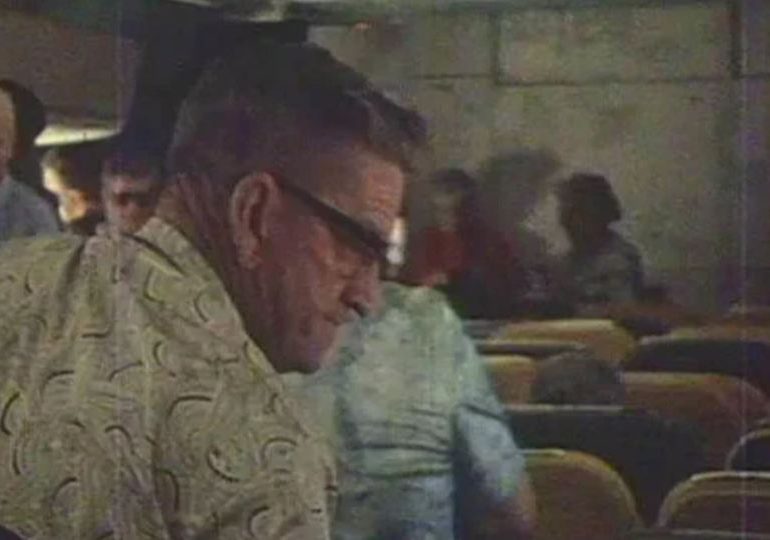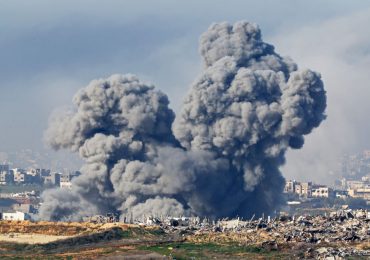HAUNTING photos show the final moments of 257 passengers and crew before their plane tragically crashed head-on into the side of a volcano.
Air New Zealand had been offering spectacular views of Antarctica on their sightseeing tours during the late 1970’s until one of its aircraft flew straight into Mount Erebus on Ross Island.
RedditPhotos developed from camera’s at the crash site show passengers during their final moments before disaster struck[/caption]
RedditOne woman is seen with a camera round her neck during the sightseeing trip[/caption]
Perhaps the most haunting image recovered from the crash, believed to have been taken on impact
Flight 901 had embarked on an 11-hour round trip when it crashed and killed everyone on board
Flight 901 had been in the middle of its 11-hour non-stop round trip from Auckland on November 28, 1979, when horror the unfolded, killing all 237 passengers and 20 crew on board.
The aircraft’s pilot, Captain Jim Collins, had flown two large loops through the clouds to bring the plane down to about 2,000ft to offer his passengers a better view of their surroundings.
Assuming he was on the same flight path as previous flights and over the vast McMurdo Sound, he wouldn’t have foreseen any problems.
But instead of ice and snow in the distance, the cockpit had been staring directly at the mountain in front of them.
Shortly before 1pm, the plane’s proximity alarms went off and just six seconds later, with no time to pull up, the aircraft ploughed straight into the side of Mt Erebus.
Just moments before their unforseen deaths, passengers had been busy taking photographs or filming in the cabin and out of the windows.
Many of these photos were later found in the wreckage and could still be developed, with some of them taken mere seconds before the crash.
The most haunting photo of the lot is believed to have been taken on impact, where fluid of some nature, thought to be fuel, covers one of the windows.
Other images shows passengers inside the plane, with many out of their seats engaging in conversation and peering out of windows.
One man wearing glasses and a colourful top appears to be making his way out of the aisle, while a young woman wearing sunglasses and wearing a white top holds her camera.
A fourth image captures the Antarctic surface covered in snow and ice from beneath one of the plane’s wings.
These are the last images of ANZ 901 shortly before it crashed into Mt Erebus in what is considered New Zealand’s worst peacetime disaster.
It wasn’t until hours later, when search and rescue operations were dispatched after the plane failed to return, that worst fears were realised.
Wreckage was spotted on the lower slopes of the volcano – with no signs of any survivors.
Image taken at the scene show parts of the plane strewn across the Antarctic floor.
The wreckage still remains today, partially covered by snow, acting as a silent tribute to the flight of a lifetime that ended in tragedy.
One theory behind the crash is that the pilots were briefed with a flight path different from the one put into the plane’s computer.
Another is how a weather phenomenon known as whiteout – where the light between the white snow or ice underneath and the clouds overhead created an illusion of clear visibility – sealed the plane’s fate.
This theory as supported by a transcript recovered from the black box recorder which revealed the crew were inexperienced with the continent’s harsh weather conditions.
One of the captain’s last utterances was: “Actually, these conditions don’t look very good at all, do they?”
Ross Island has since been witness to several commemoration events by the victims’ relatives.
A cross and a koru – a stone coiled fern – have been placed near the crash site.
Mt Erebus has previously left scientists baffled after it was discovered to have been spewing £5,000 of gold every day despite being covered in ice.
Amongst plumes of gas, steam, and rock bombs, tiny specks of crystallised gold are being emitted from the world’s tallest volcano.
The wreckage of the Air New Zealand flight on the side of Mount Erebus following the crash on November 30, 1979
Pieces of the plane covered an area of 600 x 60 yards
WikipediaThe wreckage still remains today[/caption]
RedditAnother photo taken by a passenger showing the view of Antarctica from outside their plane window[/caption]
WikipediaThe aircraft involved in the accident, photographed in 1977[/caption]
AlamyThe Air New Zealand flight flew into Mount Erebus volcano on Antarctica’s Ross Island[/caption]
Leave a comment








